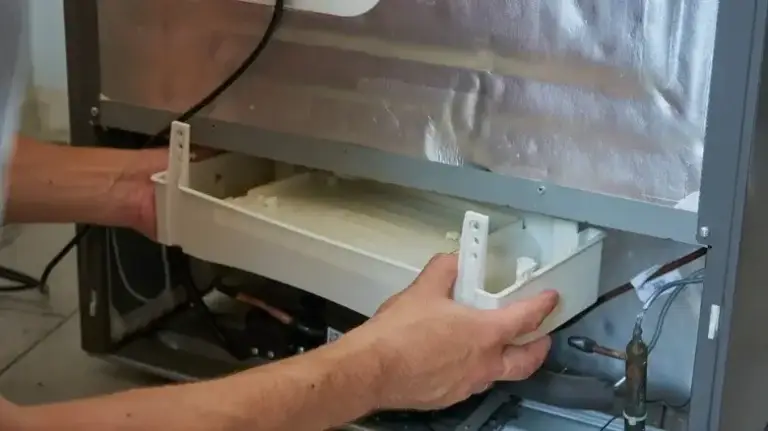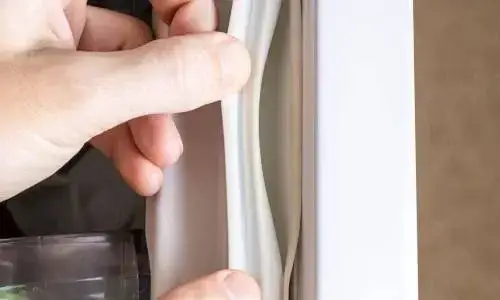A leaking fridge is more than just an annoying mess — it can be a sign of a deeper problem. If you’ve noticed water pooling around your refrigerator, don’t ignore it. Addressing the issue early can prevent damage to your floors, reduce the risk of mold, and extend the life of your appliance. In this post, we’ll explore the most common causes of fridge leaks and what you can do to fix them.
1. Clogged or Frozen Defrost Drain
Problem: The defrost drain removes water that collects during the automatic defrost cycle. Over time, debris or ice can block the drain.
Symptoms:
Water pooling at the bottom of the fridge or inside drawers.
Slow draining during defrost.
Solution: Locate the defrost drain (usually at the back of the fridge). Flush it with hot water or use a pipe cleaner to remove the clog. If it’s frozen, gently thaw the area.
2. Broken or Misaligned Drain Pan
Problem: All refrigerators have a drain pan underneath to catch excess water. If the pan is cracked or misaligned, water can leak onto the floor.
Symptoms:
Puddle of water under the fridge.
No obvious internal leak.
Solution: Inspect the drain pan (located at the bottom of the fridge behind the front grille). Replace it if damaged or reposition it if it’s out of place.

3. Clogged or Leaking Water Supply Line (for Ice Maker or Water Dispenser)
Problem: If your fridge has a built-in ice maker or water dispenser, a leaking or disconnected supply line could be the culprit.
Symptoms:
Water pooling behind the fridge.
Reduced water flow or no ice.
Solution: Pull the fridge away from the wall and inspect the water line. Tighten any loose connections and replace damaged tubing. If unsure, call a professional to avoid causing more damage.
4. Improper Fridge Leveling
Problem: A refrigerator that isn’t level can cause water to pool where it shouldn’t, especially near the defrost drain or the drain pan.
Symptoms:
Water leaking from one side.
Uneven door swing or frequent closing issues.
Solution: Use a level to check the fridge’s balance. Adjust the front legs so the fridge tilts slightly backward — this helps doors close properly and ensures correct water drainage.
5. Damaged Door Seals (Gaskets)
Problem: If the door doesn’t seal properly, warm air can enter the fridge, causing excess condensation and potential leaking.
Symptoms:
Moisture buildup inside.
Door not closing tightly.
Solution: Check the gasket for cracks, mold, or looseness. Clean it with warm soapy water and replace it if it’s worn out.

6. Full or Overflowing Ice Maker Tray
Problem: If the ice maker tray gets stuck or overfills, water can spill over and leak.
Symptoms:
Water around the ice maker.
Clumps of ice or overflowing ice bin.
Solution: Empty the ice tray, reset the ice maker, and check the float mechanism. Clean the area to ensure it’s functioning properly.
When to Call a Professional
While some leaks can be fixed with a little DIY effort, persistent or complex issues may require professional attention. If you’re unsure about the source of the leak or don’t feel comfortable handling repairs, it’s best to contact a certified appliance technician.
At Sam Appliance Repairs, we specialize in fast, reliable fridge repairs across the GTA. Whether it’s a leaking fridge, strange noises, or temperature issues, our experienced technicians are here to help — often with same-day service.
Final Thoughts
A leaking refrigerator is more than just a nuisance — it’s a sign that something isn’t right. By identifying the source of the leak early, you can save money on repairs and avoid major damage to your home. From clogged drains to faulty seals, the causes are usually fixable.
Need help with a leaking fridge? Contact Sam Appliance Repairs today for expert, local service you can trust.

